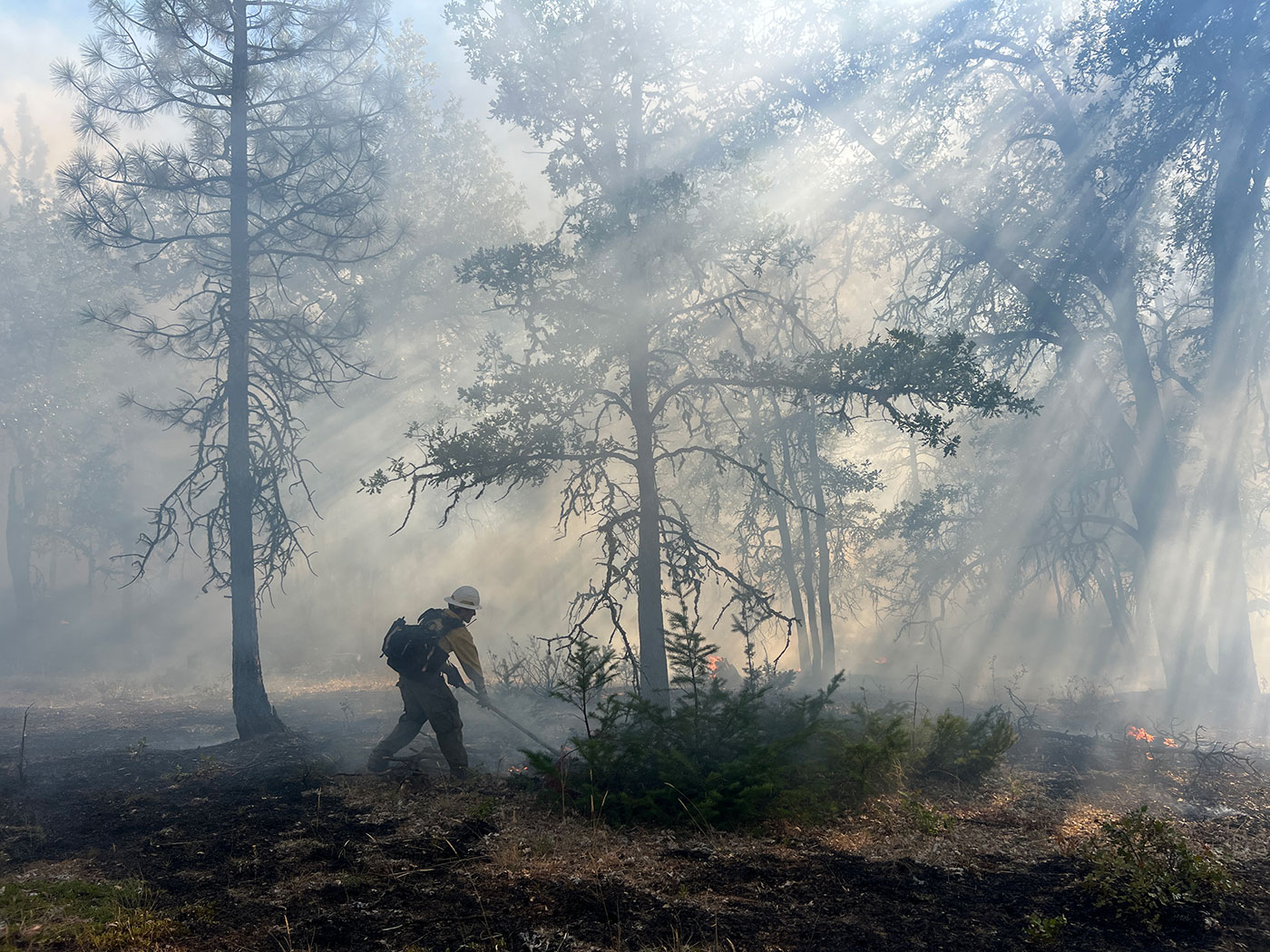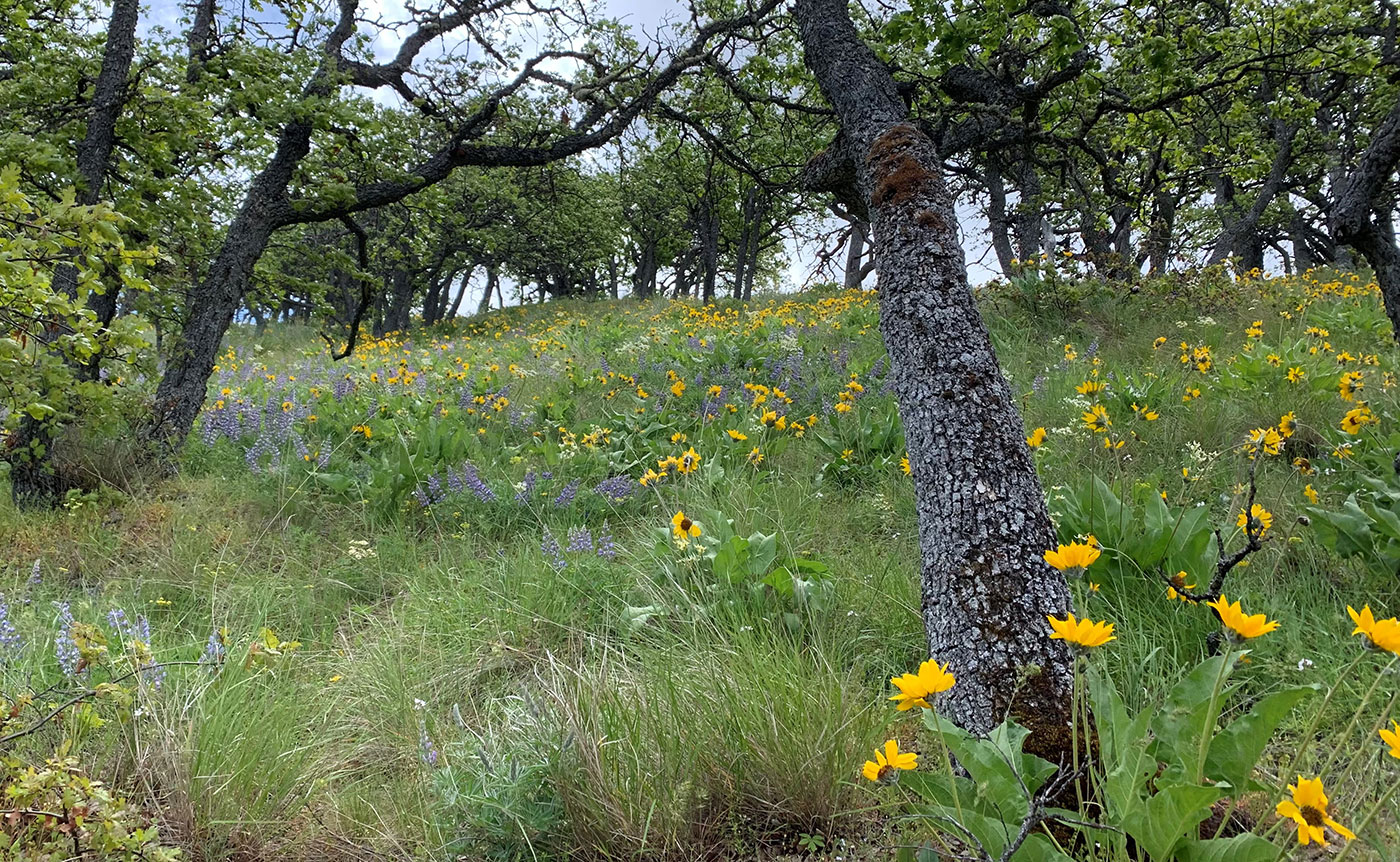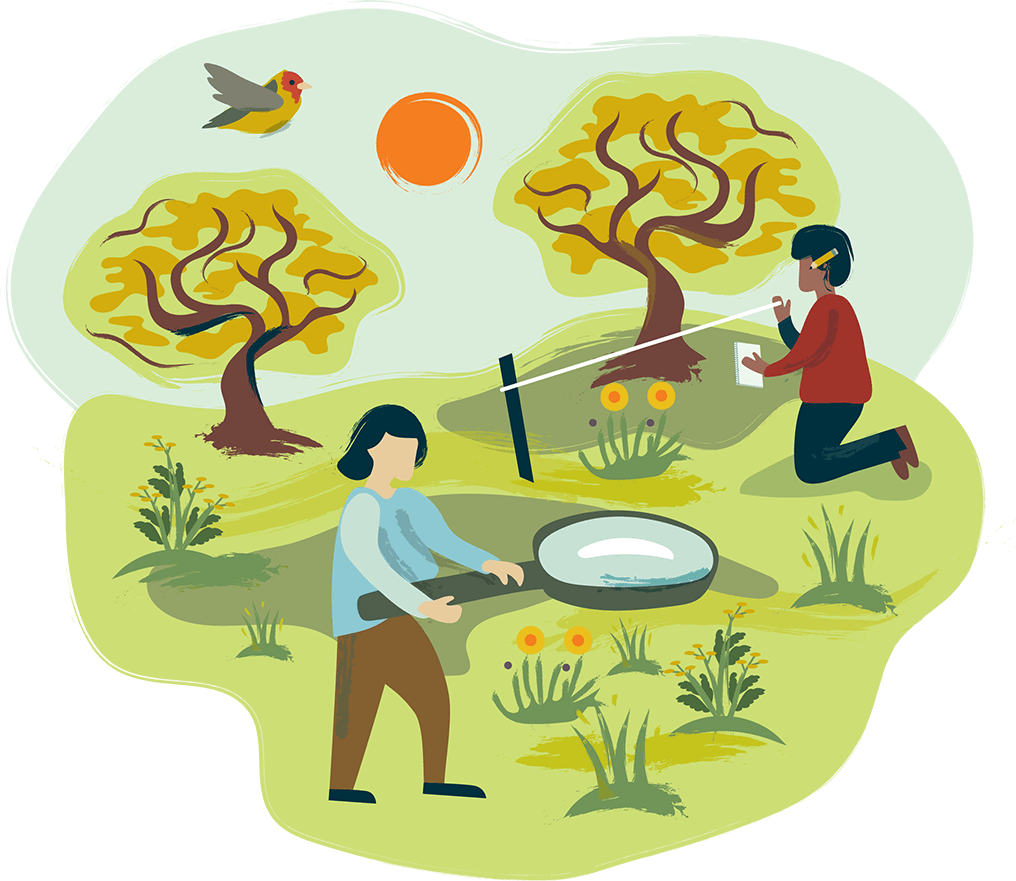Oak Management Pathway

Step 2.2: Guidance Topics
In each of the categories below, we offer guidance tailored to the different oak systems. From the trees and the understory to the fire events impacting them, we have collated and created resources to guide you on your journey.
Resources to guide you on your journey

The Trees
Oregon white oaks across the Pacific Northwest are genetically almost identical, but how they look and function is strongly influenced by where they grow and the kinds of disturbances they experience. ECOP’s guidance on the trees can help you understand why your oaks grow the way they do and consider how to improve tree health. Topics include how to reduce risk of high intensity fire, release overtopped oaks from conifer encroachment, and what changes to watch for as this resilient tree responds to fire or changes in climate or growing conditions.

Fire
Oaks in the East Cascades are uniquely adapted to wildfire. They have thick bark, waxy leaves, and insulated buds that resist burning and protect them from the heat of fire. But over 100 years of fire exclusion has caused changes in oak forests. As a result, fire now burns differently than it did historically. If you are curious about what to do to prepare for wildfire, how to care for oak habitat that has burned, or how to return the healing effects of prescribed fire, check out ECOP’s guidance on fire for ideas.

Understory Plants
The oak understory is a tapestry of wildflowers, shrubs, and grasses that contribute special qualities to these keystone habitats. The understory is highly responsive to site characteristics like rainfall or sun exposure, but also to activities that disturb soils or impact plant reproduction - things like equipment operation, grazing, and planting.
Caring for your oak understory may include planting native flowers or grasses into disturbed soils, creating cover for small mammals and birds, or removing undesirable annual grasses that displace native plants and alter fire behavior. Whatever your goal, ECOP’s guidance on understory plants shares lessons learned from case studies and research to help you avoid unintended outcomes in the understory and restore oak habitats effectively.




